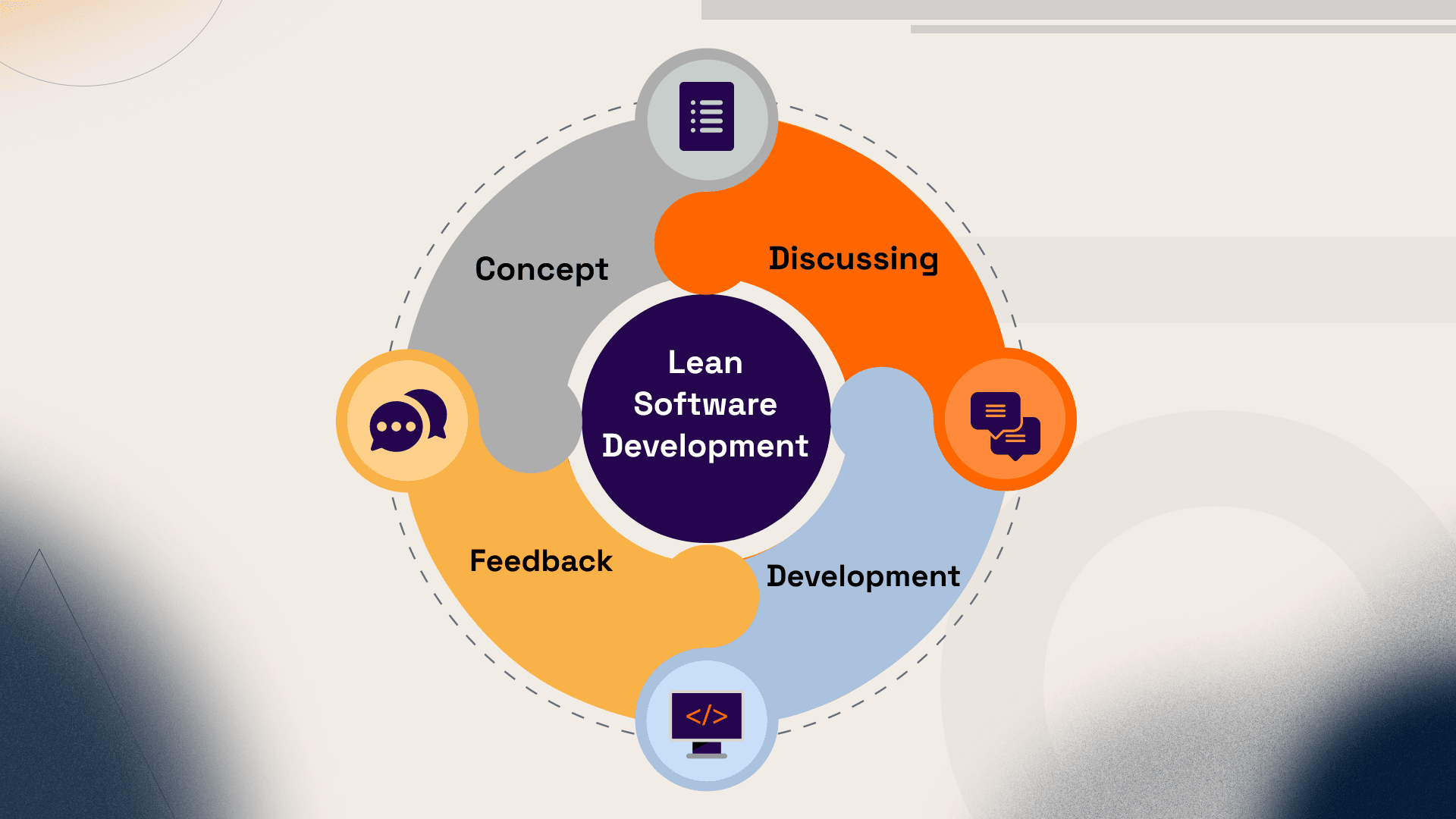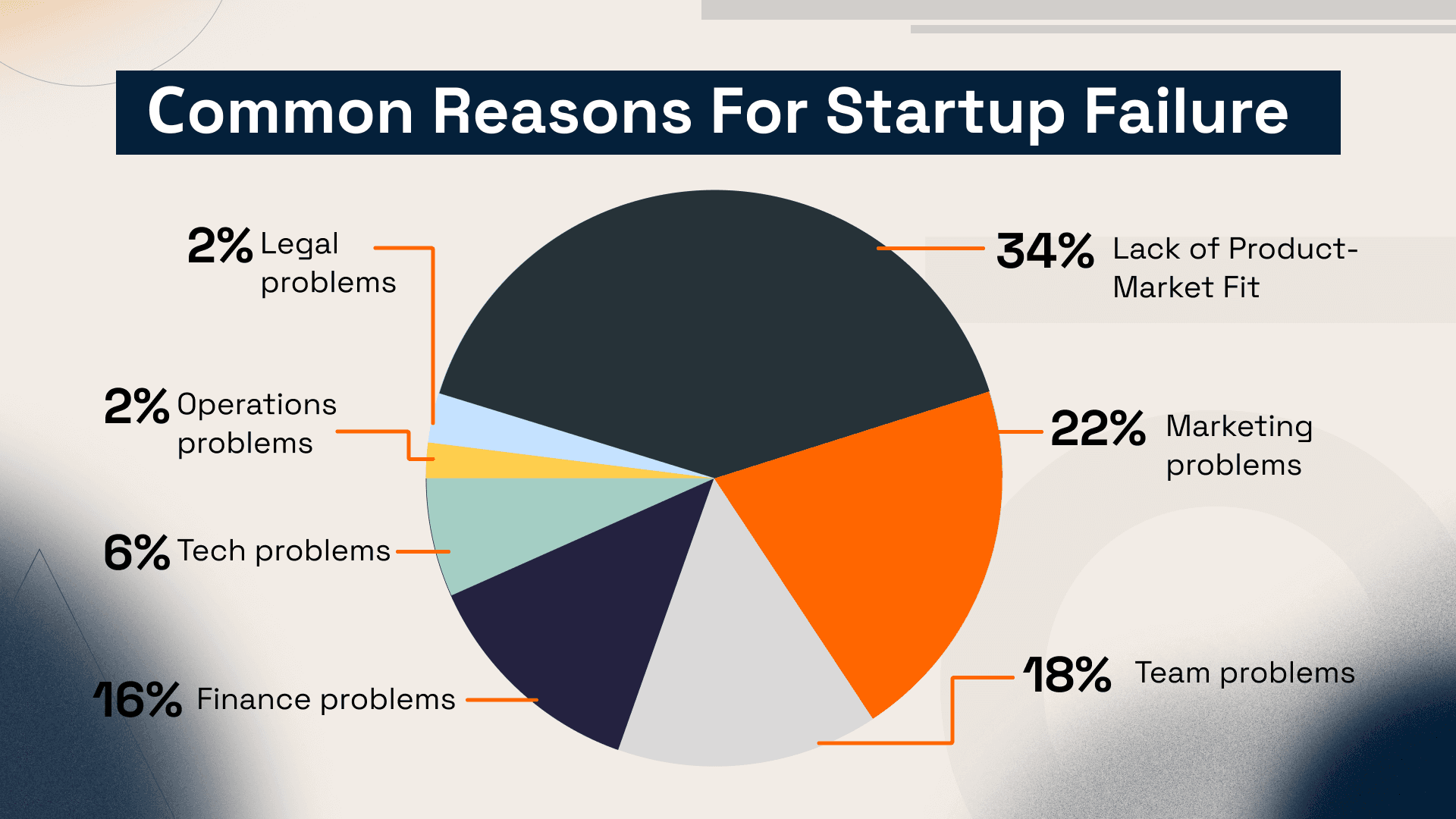
According to Failory, nearly 90% of Startups close within their first three years. The causes differ, but most failures stem from unclear priorities early on. Without a defined direction, progressing from an Early Stage Startup to one in the Growth Stage Startup becomes challenging. This article presents a practical guide with clear steps to support your efforts in growing an impactful project and scaling it efficiently.
1. Define Your Vision and Identify the Problem-Solution Fit
A successful tech venture isn’t about flashy features or cutting-edge technology. It begins with a clear alignment between a genuine market need and the solution you provide. This is exactly the product market fit definition — the moment when an offering hits the bullseye of the user's expectations and problems.
What does product-market fit really mean? In practice, people don’t just show interest—they actively engage with your product, recommend it to others, and prefer it over earlier options. To reach that point, begin with problem-solution fit—a solid grasp of the problem you’re solving and how your solution meets that need.
The Jobs-to-Be-Done (JTBD) framework is useful here. It helps you understand the situation from the user’s viewpoint. For instance, someone isn’t just searching for “another task app” — they want to “stop forgetting things and regain control.” That’s a whole different perspective.

As a Founder, to conduct a solid Startup product-market fit analysis, begin by answering a few essential questions:
-
What need exists in the market? Avoid vague answers like “people get bored.” Instead, clearly define the problem—for example, “people lose focus because unorganized information floods their messaging apps.” The issue should be specific, relevant, and have a clear impact.
-
Who exactly faces this issue? Avoid broad terms like “internet users.” Instead, specify something like “Project Managers at agencies managing three or more teams at once.” The more precise your audience, the better your chances of achieving product-market fit. A focused target makes your solution more relevant and effective.
-
How does your solution address this problem? For example: “We provide a hub that combines Slack, Trello, and Zoom into one visual workspace, featuring an AI assistant that highlights key priorities.”
So, how to find product market fit? Begin by fully understanding the problem your target audience faces. Define a clear value proposition, focus on a specific segment, and stay flexible — adjust your approach until you notice real signs: people return regularly, engage actively, and recommend your creation to others.
2. Research the Market and Test Your Hypotheses
At the Early Stage, your primary goal is to gather insights and confirm demand. Validation prevents wasting time and resources on something that might not be needed. There are effective tools that help you quickly collect market feedback and determine if your idea holds real promise.
- Customer Interviews. Conduct at least 30 detailed interviews with your target audience. Focus on specific situations: what challenges they face, which tools they’ve tried before, and why they stopped using them. These insights are crucial for setting your Startup priorities and grasping what people really care about.
- Ad-test. Run an ad campaign centered on your value proposition. Monitor metrics such as click-through rate (CTR), submitted emails, or clicks on the call-to-action. If the response is weak or nonexistent, it’s a clear signal to reevaluate the problem or how you’re presenting your solution.
- Smoke-page. This is a landing page with a headline, 2–3 key benefits, a mockup of the interface, and a “Sign Up for Beta” form. It should feel like a real product. If you attract visitors but get no sign-ups, rethink your offer or clarify the value more effectively.
Based on the feedback gathered, the Founder develops a clear picture of what the market truly needs. This helps pinpoint the core feature to focus on first and proceed with creating the MVP. At this point, you see the first indication that the crew is heading toward product-market fit — when the solution begins to align with customers’ expectations and challenges.
3. Track Key Metrics from Day One
Let’s look at the main indicators you should focus on from the very start.
- CAC (Customer Acquisition Cost) — the average cost to acquire one paying user.
- LTV (Customer Lifetime Value) — the expected total revenue from a single customer over their entire use of the solution.
- Payback Period — the time it takes to recover the cost of acquiring a customer.
- North-Star Metric — a key indicator that reflects the core value your offering delivers. This should be defined individually based on what your tool provides.
These metrics form the financial foundation of an emerging business. They help you adjust your business model promptly, assess the effectiveness of acquisition channels, and make informed decisions about growth.
4. Build a Strong Team
In a Startup, ideas matter, but the developers determine whether the creation reaches the market. According to CB Insights, 14% of unicorns fail due to ineffective working groups.
Who should be in the core team at the start?
- CEO (Chief Executive Officer) — sets the overall strategy, leads partner negotiations, represents the project to investors, and manages the workers.
- CTO або Tech Lead — makes key decisions on the architecture, programming languages, frameworks, and code quality.
- Product Growth Manager — drives development, shapes the value proposition, prioritizes features, gathers feedback, tests hypotheses, and scales proven solutions.
By the way, we covered this in more detail in the article How to Build an MVP Team: Roles, Structure, and Hiring Tips.
This crew includes the essential roles and provides the company with the drive for growth — at early Startup stages, having a strong core that quickly adapts to changes and makes decisions is critical.
5. Build an MVP Using the Lean Approach
To save time and resources, follow the lean approach. Develop a minimal working version that focuses on solving one specific user problem.

Start by pinpointing the primary user need, then develop just the essential feature and deliver it to real target groups quickly. Watch how they engage with the product — what they use and what they skip.
Next, refine the development based on the feedback gathered. This is the Build–Measure–Learn cycle in practice. At the same time, test several options (like different onboarding flows or payment models) using the Set-Based Design approach. This ensures decisions are driven by data, not guesses.
6. Invest in Quality from the First Sprints
Skipping QA early causes lost trust, higher costs, and growing technical debt. To avoid this, set up basic quality controls from the start:
- Automated tests for critical features (registration, payment)
- Manual testing before each release
- A feedback channel (like Sentry or an in-app form)
For more on why a QA group is essential, check out our article Why QA Team Matters: The Critical Role of Testing in Software Development.
7. Manage Finances and Plan Your Runway
Failory reports that 16% of Startups fail because they run out of funds.

To prevent this, it’s essential from the beginning to create a clear financial model: outline the costs needed to launch, estimate when revenue will begin, and calculate how long the team can sustain operations without profit. Then, select the appropriate funding strategy.
- Bootstrapping — launching with your own funds or revenue from early customers. It provides full control but can slow growth.
- Startup business financing on the pre-seed stage— funding from accelerators or funds. To secure this, the founding staff needs to show validated demand and present a strong pitch.
- SAFE / Convertible Note — investment tools that let you raise capital without setting a company valuation right away. Perfect for early stages before a formal funding round.
Important: regardless of the Startup financing strategy you choose, plan your runway for at least 6–9 months. This buffer gives you time for multiple iterations, tool adjustments, and informed decisions if the initial version falls short of expectations.
Understanding Startup financing stages helps prevent one of the biggest causes of failure—running out of cash. When a Company clearly knows its current phase, the funding required for growth, and the best sources to secure it, the risk of shutting down due to lack of resources drops significantly.
8. Set Up Legal Framework and IP Protection
This lays the groundwork for safe collaboration and attracting investors. Within the first few weeks, make sure to:
- Incorporate the Company in the right jurisdiction
- Establish NDA and IP agreements with all the members and contractors
- Create a cap table — a clear equity breakdown among founders, investors, and the option pool
At the launch stage, many co-founders rely on verbal agreements and delay legal formalities. Although common, this approach is risky. Without written contracts, misunderstandings often occur around roles, contributions, and ownership of intellectual property.
A smarter approach is to formalize everything in a founders’ agreement—a document that details each person’s contributions, responsibilities, decision-making processes, and what happens if a founder leaves. This isn’t just a formality; it safeguards your interests and strengthens trust within the team.
9. Choose a GTM Strategy and Attract Your First Users
A go-to-market (GTM) strategy lets you validate demand, collect feedback, and gain your first loyal customers. There are several approaches to consider.
- Product-led growth — where the product itself drives acquisition. For example, launching with a freemium model that lets people try a basic version for free, or adding a referral feature that encourages users to invite others.
- Community-building — this might be a niche blog, useful checklists, a regular newsletter, or a chat group where people discuss challenges your solution addresses. It helps gather early feedback and build a contact list before launch.
- Early adopter program — inviting a limited group to test the functions before public release. In exchange, you receive detailed feedback, and they get rewards like discounted access or a lifetime subscription.
The key isn’t quantity, but quality — focus on participants who try out your offering and provide valuable feedback.
10. Make Data-Driven Decisions and Scale Up
Early sales aren’t a green light to scale right away — they’re an opportunity to confirm if the business model is stable, and it meets core needs effectively that keeps users returning.
To assess this, apply the following methods.
- OKR (Objectives and Key Results) — set clear quarterly targets, such as increasing retention from 30% to 45%, to keep the staff focused on measurable goals.
- Cohort Analysis — track the repeated activity of new accounts over 7, 14, and 30 days to gauge habit formation and loyalty.
- Kill / Pivot / Scale — three choices: kill — stop if clients don’t see value; pivot — change direction if there’s demand, but the current solution misses the mark; scale — expand if the product delivers value and unit economics support growth.
What is growth stage startup? It’s the phase when a Company has a validated business model, a growing user base, and is prepared to expand into new markets with additional funding.
Building a profitable venture isn’t about luck. It’s about making smart decisions daily within your limits. Starting with a clear vision, a validated problem, a minimal MVP, and tracking key metrics puts you ahead of 90% of others.
Want to see how ready your Company is for a real launch? Join our free Startup Readiness Audit — a quick review of your key priorities in the early stages. Reach out to us, and we’ll help turn your idea into a solid growth plan.

